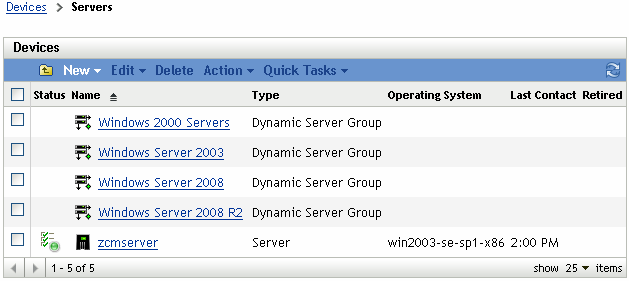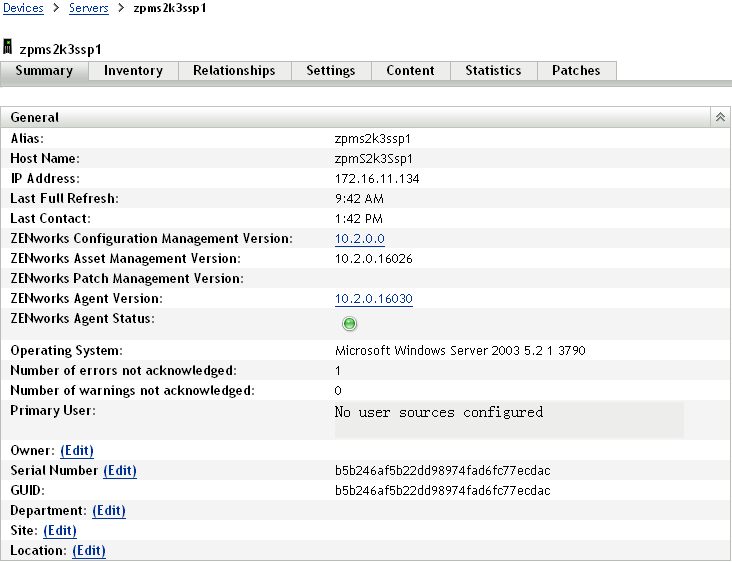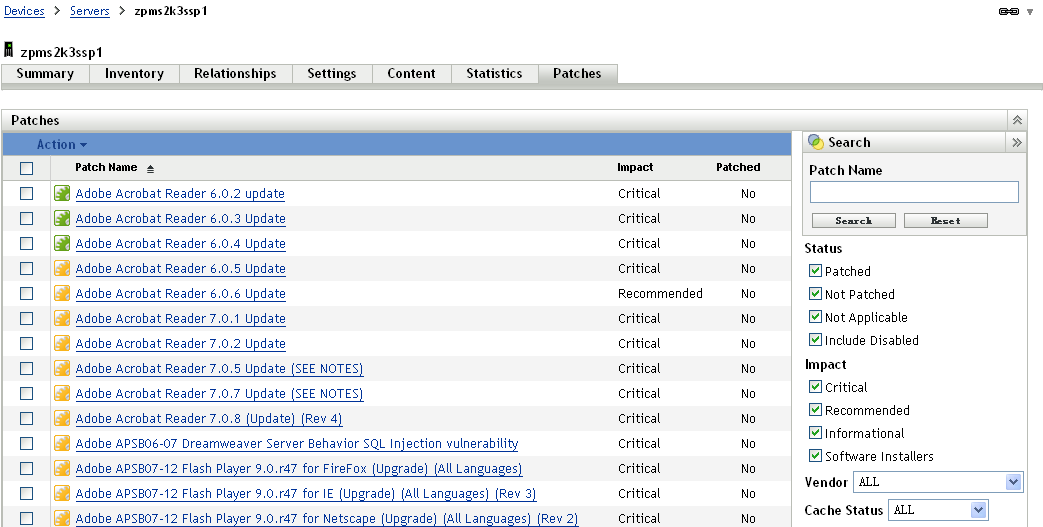8.1 Accessing the Patches Tab for a Device
To view the patches for a specific server device:
-
Click the Device tab on the left panel.
A page displaying the root folders for each type of device appears, as shown in the following figure:

The Servers folder is the root folder for all managed servers and the Workstations folder is the root folder for all managed workstations.
-
Click the Servers link.
A list of server groups classified on the basis of their operating systems appears, as shown in the following figure:

You see the following icons on the Servers page:
Icon
Status

Message Status: Normal
Device Status: Bundle and policy enforcement successful

Message Status: Warning
Device Status: Bundle and policy enforcement successful

Message Status: Error
Device Status: Bundle and policy enforcement successful

Message Status: Error
Device Status: Bundle and/or policy enforcement failed on one or more bundles or policies.
Devices can also be found by searching. The following filters are available:
Filter Item
Result
Name
Searches for devices with a particular name.
Type
Searches for devices of a specific type.
Operating System
Searches for devices running a particular operating system.
Message Status
Searches for devices that display a particular message status.
Compliance Status
Searches for devices based on their compliance status, such as Yes or No.
Device Status
Searches for devices based on the device status.
Include subfolders
The search is also executed in the subfolders.
-
Click the required group (Server or Dynamic Server Group) to view details of the group and the members of the group. Alternatively, you can click the managed device.
A page displaying details about the managed device or member is displayed, as shown in the following figure, where the name zpms2k3sSP3 for the managed device is an example. The network administrator decides the name of the managed device.

-
Click the Patches tab to display the patches associated with the server device:
